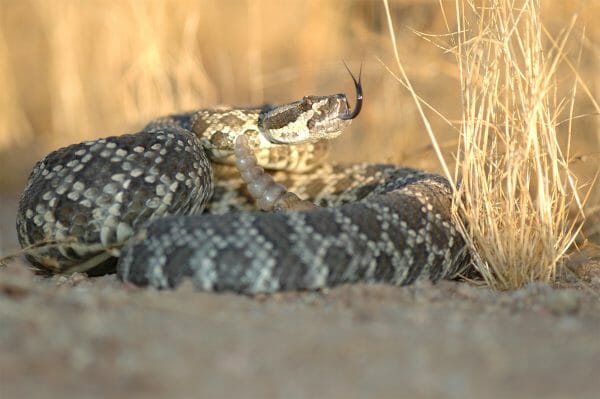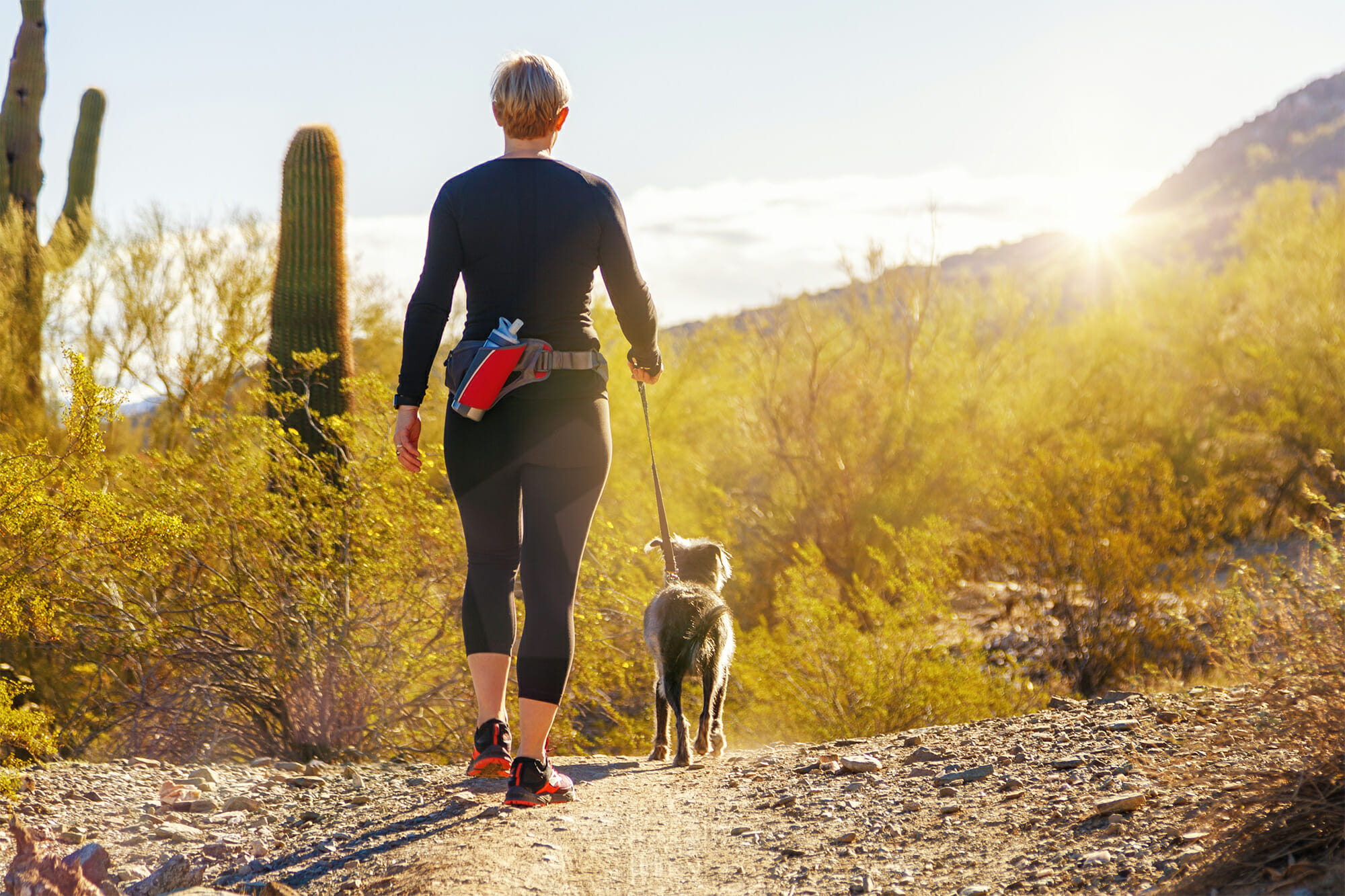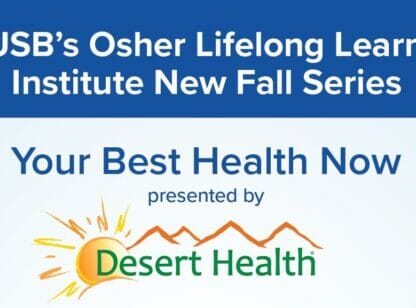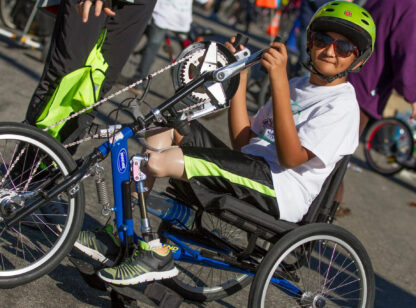“Just another sunny day in paradise,” my father-in-law would say when we came to the desert to visit. Now a local, I repeat it often. We all love our beautiful valley, but living and playing here takes some awareness and preparation.
With March upon us, outdoor activities abound as do the many opportunities to celebrate. Whether you’re a seasoned local or vacationing tourist, taking part is strongly encouraged, but know that it doesn’t take much for a fabulous day in the sun to turn into a trip to the ER.
For tips, I turned to Desert Care Network Trauma Injury Prevention Coordinator Gael Whetstone, BSN, RN. She assesses reasons people enter their trauma center and educates the community on how to stay out of it through prevention and preparation.
“We are a resort community and love that people come here to eat, drink and have a good time,” says Whetstone, “but many can be unprepared for our unique desert climate and how it effects your body.”
Hydrate, hydrate, hydrate (heard that before?)
Dehydration is one of the most common conditions that land people in the ER, says Whetstone, and it is often coupled with injury through fainting or falls.
Sitting around the pool with friends, having a few drinks, then going out to dinner and enjoying a few more, is a familiar Palm Springs scene. In the morning, you enjoy a cup of coffee, go for a little hike and meet friends for brunch.
“When you combine alcohol and coffee (both diuretics) with our low humidity and heat, the results can be hazardous,” she adds. “If you throw in a hike where you’ll lose even more moisture and your metabolism speeds up, it can sometimes be deadly.”
So before you start enjoying your social or fitness activities, she cautions, be sure you are hydrated with water and take plenty of water with you wherever you go. Enhanced water with electrolytes can be beneficial. “If you feel thirsty before you begin, you are probably already dehydrated.”
Feeling the heat
If you’ve lived here a while, chances are you’ve experienced heat exhaustion, and it is no fun.
Symptoms may include nausea, dizziness, headache, muscle cramping, fast weak pulse, heavy sweating, and cold, pale and clammy skin. What to do? Move to a cool place and loosen clothing. Seek medical attention if vomiting or if symptoms last longer than an hour. “If confusion or fever set in, it could be heat stroke and medical attention is essential,” adds Whetstone. “With heat stroke, the body temp can get so high, it can cause brain damage and death.”
Hitting the trails
Even if you are going for a quick hike, preparation is key. “Take liters of water, not one small bottle,” advises Whetstone, “and be prepared for a potential change in weather with layered clothing.” Pack salty snacks, bring your cell phone and never hike alone. Tell someone the route you are taking and when you should return. There are apps that can help track and share your journey, she adds.
When is the best time for desert hiking? While evening hikes are common in most places, 4 p.m. can be the height of our heat. The recommendation by the Palm Springs Fire Department, she says, is between 5:30 a.m. and 9 a.m.
March is snake season

We are not the only ones emerging with the warm spring air. So are snakes, which are very important to our ecosystem and should be respected. They are not aggressive unless threatened or surprised, so know where they may be hiding and keep your distance.
“Snakes tend to hang out in bushes and rock crevices out of the sun,” says Whetstone. “So, when you go to sit on that rock for a rest, tread lightly. Also, keep your furry friends on a leash as they like sticking their noses in bushes, and noses are the most common place dogs are bitten.”
Snakes have the least developed sense of hearing, but sense vibration, so she also recommends a walking stick which will alert them each time it is planted.
If you meet one too closely…
“On a national level, there is a higher rate of young males being bitten when alcohol is involved and they decide, for whatever reason, to play with the snake,” says Whetstone. (A case of bad decisions leading to more bad decisions).
“If you are bitten, you want to get to the emergency room as quickly as possible, so your first step is to call 911,” she says. Remove any restrictive clothing and jewelry and try to stay calm. DO NOT apply ice or a tourniquet or cut the wound (and sucking out venom is only in the movies). Let the swelling happen and focus on getting to the hospital. Most importantly, she adds, do not try and take a photo, capture or kill the snake. “If you cut the head off of a snake, they are still able to strike and administer venom for hours after their head is severed.”
I was disappointed to hear that snake bite kits don’t work. “The new snake bite kit is your cell phone and car keys,” says Whetstone, who strongly recommends the SnakeBite911 app. “It takes you through the steps and helps you call 911.” But if you are out of cell phone range, your priority is to get to your car and to the closest hospital. The good news is that 45 percent of viper bites are dry, meaning no venom is expelled, but if needed, all valley and high desert hospitals have anti-venom therapy. It’s important to also note that if your dog is bitten, they will have to go to an animal hospital versus a vet clinic (the valley’s 24-hour emergency animal hospital is located on Jefferson at Highway 111 in Indio).
Enjoy this incredible weather and make it a fun and safe season. Just be sure to take precautions to avoid the perils of our miraculous desert paradise.
Gael Whetstone has an informative presentation entitled “When the Desert Strikes Back” and is available to speak with groups. For more information contact her at (760) 323.6140 or [email protected].

















































Comments (0)